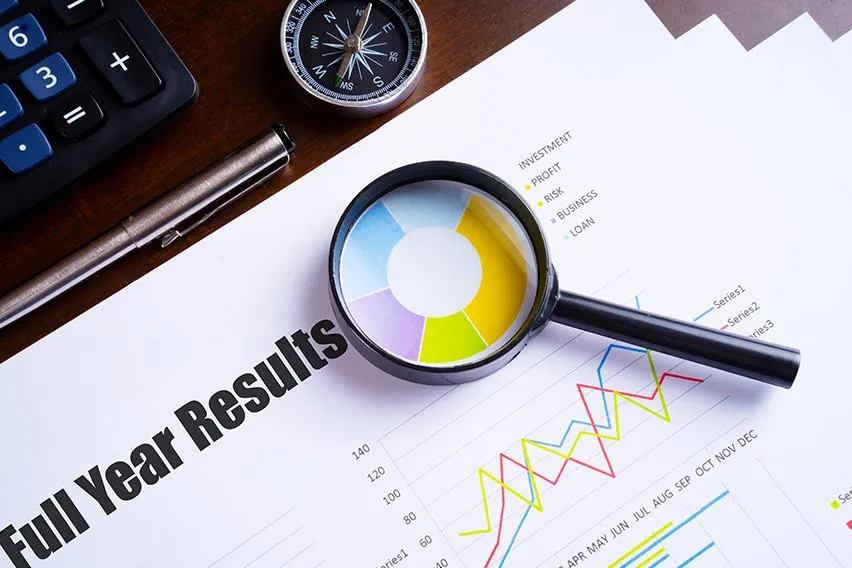Fiscal Year-End Accounting: Checklist for Business Owner’s

It’s getting close to the end of the year. Things are coming to a close, and there’s plenty to be done still. That’s the way that most people feel about the end of the calendar year, at least. However, for a business, there’s two year-ends to worry about. They don’t always line up with one another, either. Businesses have to wrap things up each calendar year, as well as every fiscal year.
Is the fiscal year-end approaching for your business? Year-end close can be overwhelming, but it doesn’t have to be. Keep reading to find out exactly what you should be doing for your business this fiscal year-end.
Here’s What We’ll Cover:
A Checklist of Things Business Owners Need to Do
What Is Fiscal Year-End?
Fiscal year-end is the completion of a 12-month period for a business. This one year accounting period is not the same as a calendar year, however. The two rarely, if ever, line up. In most cases, a company’s fiscal year is related to the start of the business.
Fiscal year-end comes with many different responsibilities for a business. The majority of the time, the fiscal year is the time that financial statements are published for a company. The biggest financial statements are the income statement, balance sheet, and cash flow statement. These three reports can be reviewed together to understand the financial picture for a company.
It’s also when the company is reviewed by financial analysts. They perform several levels of accounting analysis, providing financial reporting to key stakeholders. These reports give insight to a business’s financial position, and how business operations have been handled for the year.

A Checklist of Things Business Owners Need to Do
If you’re a business owner, the fiscal year-end can represent some challenges. The closing process can be difficult. However, if you use the checklist provided, you can kickstart your year-end accounting procedures!
Gather Your Financial Statements
When you’re creating your new financial statements, keep your old statements on hand, too. This lets you compare your old statements with your new ones. As a business owner, having the two or more sets of statements to compare can help you forecast your business’s future. As mentioned previously, you’ll need your “big three” financial statements. These are the income statement, the balance sheet, and the cash flow statement. Each of the statements represent the following information:
- Income Statement: The statement that summarizes all income and expenses
- Balance Sheet: A list of assets, liabilities, and equity
- Cash Flow Statement: Lists all cash inflows and outflows
Follow Up on Past Due Invoices
The last thing you want going into the fiscal year-end is outstanding balances. As you get closer to the end of your fiscal year, plan on trying to collect on your past due invoices. Send customers and clients invoice reminders. If your customers are having a hard time making payments, work with them! A payment plan can do wonders for collecting outstanding balances more quickly.
A great last resort for past due invoices is a collection agency. While collections isn’t always the smoothest process, it is effective. A collection agency can help you in collecting any outstanding balances. Most collection agencies charge a modest fee to do this work on your behalf. The most important thing, however, is getting rid of bad debts and bringing money in. This keeps your business running.
Review Payroll
Payroll has a big part in your fiscal year-end. Making sure that all of your employees have been paid, and matching up the numbers, is crucial. When it comes to business expenses, payroll is high on all expense reports. Make sure your figures match up as you head into the year-end.
Review and Organize Receipts
Receipts are very important to a business, especially during the year-end. If you’re not organized with your receipts, then it’s likely that your books will have errors. Journal entries should have a receipt that goes along with them. This is the easiest way for a business to verify that a purchase was actually made. When you’re organizing receipts, you can look at them in a few different ways:
- Organize by type of expense
- Create folders and tags for specific receipts
- Catalogue receipts by the time that purchases were made
- Back up receipts digitally by scanning them or taking pictures
Organization is one of the best ways for a business to see success. Keep receipts organized year-round, and review them at the end of the year.

Reconcile Bank Accounts
One of the largest year-end duties you’ll have is reconciling your business’s bank accounts. Making sure that all bank statements match receipts and financial documents is necessary. It’s another way of providing evidence that your cash flow is working the way that it should be. Reconciliation is easy. Current bank statements need to match what your books say they are.
Another great thing about reconciliation is that you can do it for any period of time. Electronic bank statements can be generated for a specific period. This makes finding discrepancies easy. Additionally, some of the best accounting software options provide bank reconciliation services. That way, if anything out of the ordinary pops up, you’ll be notified right away.
Inventory Accounting
When you run a business that stocks inventory, you’ll want to know exactly what you’ve got on hand. Inventory is listed on the balance sheet, and it’s a large expense for any business that has it. When preparing for year-end, you’ll want to check all of your inventory counts. Making sure that inventory matches your financial statements is crucial. Many businesses have a very valuable inventory, so any counts that are off can make a large impact on statements.
Key Takeaways
The fiscal year-end presents plenty of challenges to business owners. All of the information necessary to generate financial statements is copious. What’s more is then analyzing that information, and turning it into meaningful plans and processes. Having an effective plan for your fiscal year-end accounting can make all of these processes run much more smoothly. If you’re looking for more information like this, be sure to check out our resource hub!
RELATED ARTICLES

 How to Write Off Bad Debt? Overview & Example
How to Write Off Bad Debt? Overview & Example Accounting Transactions: Definition, Types & Examples
Accounting Transactions: Definition, Types & Examples Consignment Accounting: Definition & Format
Consignment Accounting: Definition & Format Direct Vs Indirect Cash Flow Method: What’s the Difference?
Direct Vs Indirect Cash Flow Method: What’s the Difference? What Is Direct Method Cash Flow?
What Is Direct Method Cash Flow? What Is Project Accounting? A Complete Guide
What Is Project Accounting? A Complete Guide